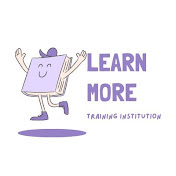BRS (Business Requirement Specification):
This is the first step where product requirements are understood from the
customer's side. This phase contains detailed communication to understand
customers’ expectations and exact requirements.
SRS (Software Requirement Specification):
In this stage system engineers analyze and transfer
the business of the proposed system to SRS by studying the user requirements
document (BRS).
Build:
It is a number/identity given to Installable
software that is given to the testing team by the development team.
Release:
It is a number/ identity given to Installable
software that is handed over to the customer/client by the testing team (or
sometimes directly by the development team)
Deployment:
Deployment is the mechanism through which
applications, modules, updates, and patches are delivered from developers to
end-user/client/customer.
Code freeze:
Code freeze means Finalization of code and no
further changes will be happening in code.
AUT: Application Under Test
Daily Status Report
The information that needs to be a part of an
individual’s “Daily Status Report” is:
- What
did you do today?
- What
are you planning to do tomorrow?
- Did
you face any issues during your day? If yes, how did you resolve them or
are they still open?
- Do you
need any inputs for tomorrow? If yes, from whom and what are they?
The recipient of this Email/Report is generally the
manager, also the team members can be CC’ed in some cases – this depends on the
communication protocol the team follows.
Verification V/S Validation:
Verification
Checks whether we are building the right system.
Verification typically involves.
- Reviews
- Walkthroughs
- Inspections
Validation
checks whether we are building the system right.
- Takes
place after verifications are completed.
- Validation
typically involves actual testing.
Example: System Testing
| Inspection | Walkthrough |
Formal | Informal |
| Initiated by project team | Initiated by author |
| A group of relevant persons from different departments participate in the inspection | Usually team members of the same project take participation in the walkthrough. Author himself acts walkthrough leader |
| Checklist is used to find faults | No checklist is used in the walkthrough |
| Inspection processes includes overview, preparation, inspection, and rework and follow up | Walkthrough process includes overview, little or no preparation, little or no preparation examination and rework and follow up |
| Formalized procedure in each step | No formalized procedure in the steps |
| Inspection takes longer time as list of items in checklist is tracked to completion | Shorter time is spent on walkthrough as there is no formal checklist used to evaluate program |
| Planned meeting with the fixed roles assigned to all the members involved | Unplanned |

0 Comments